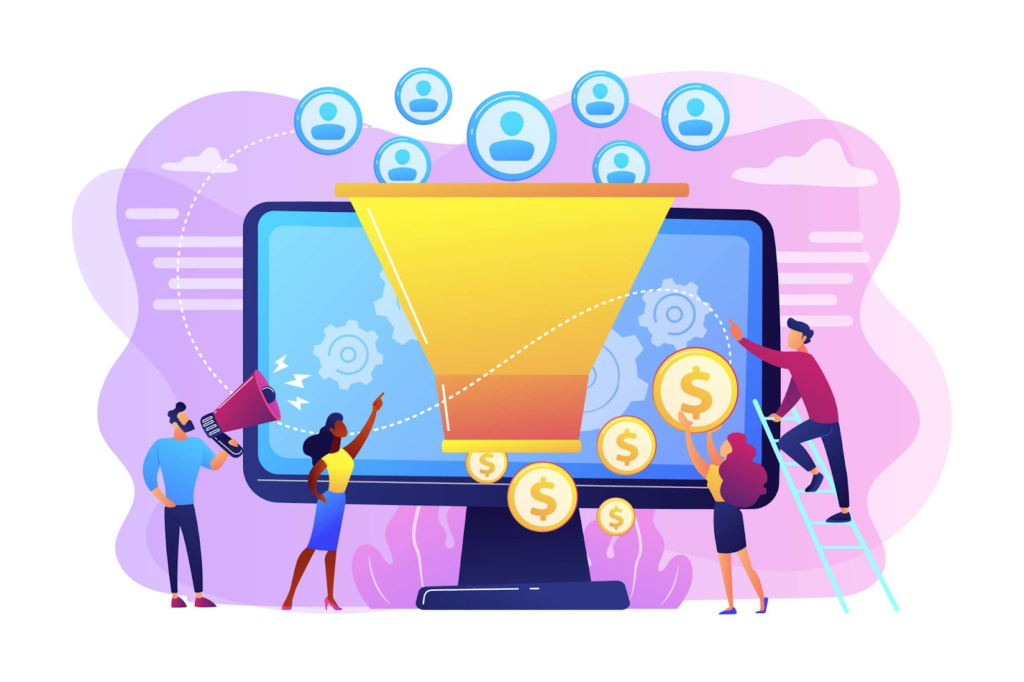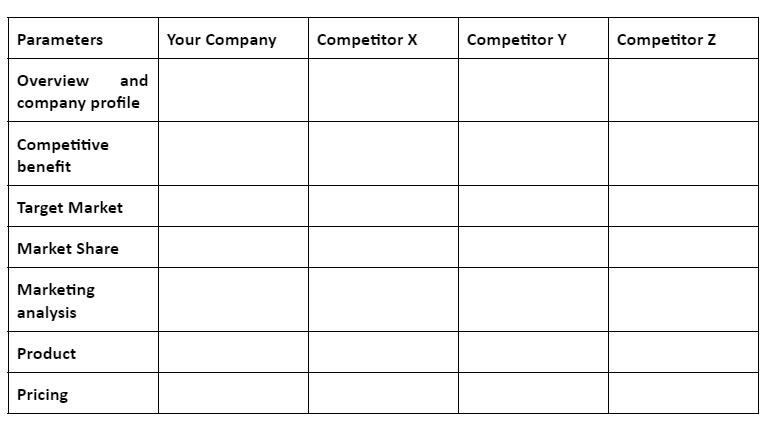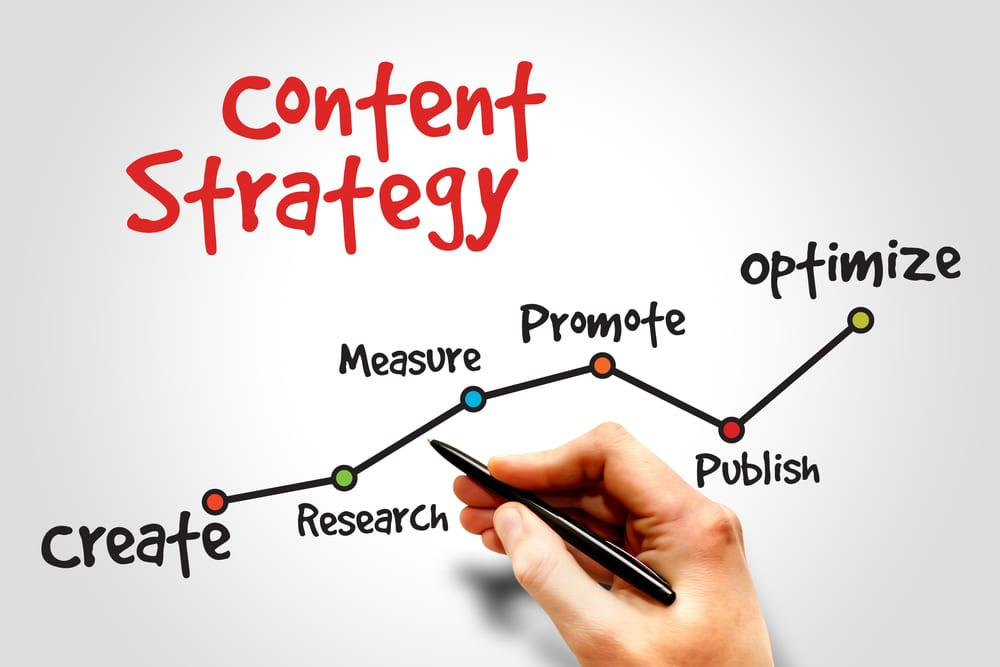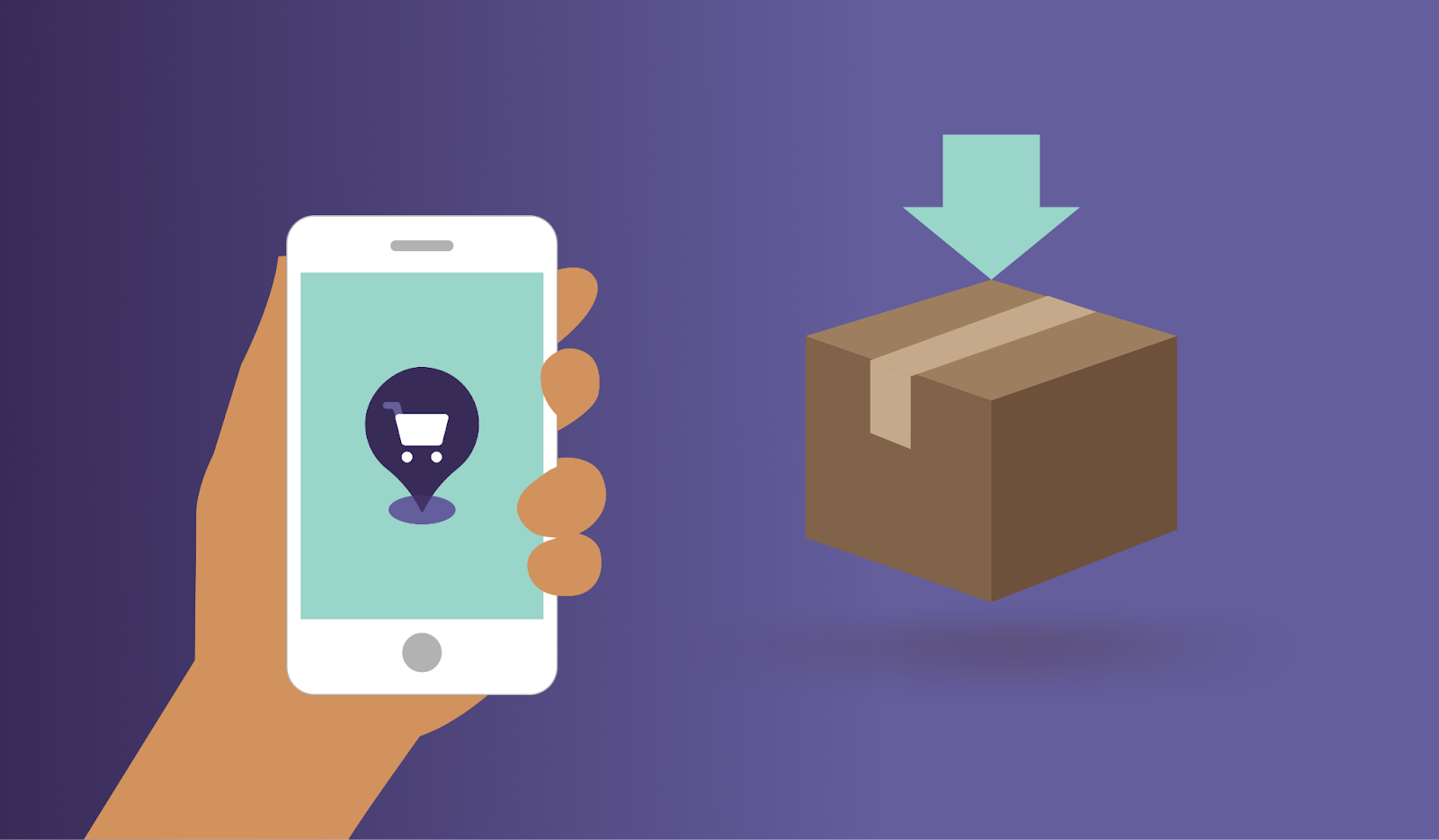The might of digitalization has taken over a wide range of industries. With the evolution of technology, its power is only growing exponentially. However, logistics is one of those few industries that has not shown much keenness as far as digital or growth marketing is concerned. It has to keep up with the ever-evolving technology and time to make strategic marketing techniques for exploring new possibilities. Also, if studies are to be believed, the logistics industry will exceed 6.8 billion euros in size which makes it more important to adopt new forms of marketing.
The irony here is that it is an ideal business in which digital marketing, when done right, can flourish the business. It is because of two solid reasons:
- Customer relationships are heavily dependent on trust factors, and digital marketing helps in gaining trust and reliability.
- When a logistics business establishes its mark with digital marketing, it sets itself above the rest.
Having said all of that, the logistics business, just like any other business, witnesses a tough challenge in the face of emerging competition and globalization. In fact, a study suggests that 37% of marketers found generating high-quality leads is one of the biggest setbacks.
So what can be done to not just survive but also thrive in the cut-throat competition? Well, a well-planned growth marketing startegy would be helpful. Let us first start with understanding lead generation!
What is Lead Generation?
When a customer expresses an interest in a business, it initiates a relationship, paving a natural way for transitioning from stranger to customer. In inbound marketing, a lead generation comes in the second stage of methodology as it takes place after a business that pulled an audience and is ready to make the potential visitors into sales-qualified leads.
So lead generation can be defined as getting potential audiences to a business and increasing their interest by nurturing them with the ultimate goal of converting them into customers. If a study is to be believed, for 91% of marketers, lead generation is their most important goal. So let us see how the process goes on.
The process of lead generation is something like this:
- A visitor finds a business via one of the marketing channels like a blog, website, and social media page.
- The visitor clicks on the call-to-action (CTA). It can be anything- an image, button, or message that motivates visitors to undertake an action
- After clicking on the CTA button, the visitor is directed to a landing page. The landing page is a page that is specifically designed for capturing the information of the lead in exchange for an offer like a course, ebook, or template.
- When the visitor is on the landing page, they fill out a form in exchange for an offer.
Voila! You now get a new lead. When you put together all the elements you can use different promotional elements, together and induce traffic.
But how do you do that? Let us discuss the best tips and strategies that will increase sales in the logistics industry:
What are the Best Growth Marketing Strategies for Increasing Sales in the Logistics Industry?

Define your Target Customer
When you want to grow your customer base in your logistics company, it is important to increase your knowledge spectrum about your target market. Also, in recent times, the logistics industry has witnessed a quick change. Thus, there has been a significant impact on the movement of goods via sea, rail, road, and air.
For a logistics company, the target market can be broadly divided into two parts:
- Businesses
- Individuals
Business Customers: The first and largest segment of the logistics target market is the businesses. Typically, these are enterprises that ship their products from one place to another; either internationally or within the country. Manufacturers, e-commerce, and retailers are some of the businesses that heavily rely on logistics.
Individual Customers: In the target market of the logistics industry, individual customers make up the second segment. They leverage the services of the logistics company for shipping their large or heavy items to transport to a particular place. People who have purchased furniture online, businesses that are shifting offices, or people who are moving residences fall in the category of individual customers.
For a logistics company, both individuals and businesses form a target market, but each segment uses the company differently. However, to evaluate a company, each uses the same set of criteria like reliability, price, service, and speed. In any case, it is essential to identify your target customers for developing a marketing strategy, irrespective of how narrow or broad your business focus is.
As soon as you determine your target market, you can come up with a customer profile. While marketing to the target customers, make sure it is done in such a way that the customers while making a decision, consider your company.
If you want to boost the profit of your target logistics market, get your network in place and refine your logistics abilities. Alternatively, you can hire an efficient growth marketing agency that will come up with the best plans for your company.
Identify your Main Competitors
Now that you understand who is your target audience, it is time to determine your direct and indirect competitors. Though it is less likely that you possess the investigative skills of Hercule Poirot, it doesn’t mean you take a blind approach to the competition. Having a good idea about your competitors will give you an idea of your business’s unique selling proposition (USP) for attracting your target market.
You might already know who the competitors are, specifically if your business went through a bid process to acquire customers. However, logistics is undoubtedly a crowded business, so it becomes critical to conduct a competitive inspection, allowing you, as a business, to identify your prospect’s value and communicate with them better.
Another way of identifying competitors in the market is exploring the service that offers superior services or the one that is leading when it comes to service delivery. After identifying your competitors, you can look at how they have leveraged growth marketing strategies.
When you are conducting the research, consider the areas in which your company provides better value. You must also consider services that don’t provide a good service, to know where you must make improvements.
To make things easy, make a competitive grid to conduct a competitive analysis easily. Generate a list of services that your customers would purchase if they didn’t opt for yours. Put them on the first row, examine every service, including yours, based on the category in the first column, and add it to the grid. Have a look at the template below to understand better:

Create Great Website User Experience
In today’s marketing ecosystem, one of the most powerful tools for any business is its website. It can be safely said that a website is your 24*7 salesman and has the probability to be your business’s most compelling asset and the fundamental of all your marketing attempts.
According to research, 73.1% of web designers believe that a non-responsive design is one of the top reasons why visitors abandon a website. Thus, making a catchy website is more crucial than what the website tells. Typically, users don’t remember the details or any salient points of content, but they will surely remember how it made them feel.
Text, graphics, layout, and engaging elements coordinate together to offer the user an experience, not just to present them with information. UX (user experience) design is a resulting piece of web work or application. Thus, making your web page distinct from various websites on the internet is crucial.
Today’s websites encompass more interactive and visual qualities to make an emotional approach to the customers, thus making your website stand out. So how do you improve your user website? Here are some of the ways you can create an appealing website:
- Use white space
- Optimize the speed of your web page
- Use compelling call-to-action
- Use hyperlink differentiation
- Segment crucial information with bullet points
- Use images (wisely)
- Incorporate well-designed and written headlines
- Maintain your page’s consistency
- Catch your 404s
- Be responsive and mobile-friendly
Since people do not exactly read the entire website, it is important that your website is scannable. With the help of infographics and visuals, you can convey what your business offers and its details. Scannable pages appeal to visitors as most of them scan the content for something that will stay for them, and they then switch to reading when they want to learn more.
Develop an SEO-friendly Content Strategy

Today, growth marketing strategies keep evolving and keeping up with them can be quite a hassle. However, these shifts can be quite beneficial and time-efficient to the overall marketing strategy if you allow them to be. A great example can be the shift of focus from keyword research, which was once the golden rule of SEO strategy.
Therefore, today’s SEO strategies encompass several pillars, components, and actions that will ensure higher success. Though keywords are still relevant, you must have a better approach to SEO.
When writing a content piece, always make sure that the title does the following things:
- Explain the workings of something
- Establish eminence
- Induce curiosity
- Command the benefit of your service
- Engage the conversation within the reader’s head.
- Explain the idea of your brand
After you have written a compelling title, establish the users’ intent. It usually serves three purposes:
- Transactional: The user looks for a particular action, like getting your service, so they could use it with crisp and short content because the user is already ready to make a purchase.
- Informational: This content is for those who are looking for information about your product. This is the content that prompts most organic revenue begins. Unlike transactional content, this type of intent demands a longer form of content that powers the learning needs of the prospects and brings the prospects into your sales funnel.
- Navigational: The user usually looks for a particular location or website, such as a brand name.
So before you start your first draft, always be determined to explain the topic to your readers in its easiest form. Beginning with a simple outline is one of the quickest ways of organization or simplicity.
After that, draft the most crucial thoughts and write subheadings. Though your thoughts are most likely to change, just write down the main ideas supporting the overall title for now.
Offer Your Customers High Value Content Formats
As far as growth marketing is concerned, content has been one of the main drivers throughout the sales funnels. Content that has high value interacts with consumers in the awareness stages, establishes reliability and trust as they evaluate brands, and helps them come to a decision that helps in converting the leads.
Content marketing is all about producing content to entertain and engage with the personas of your audience and convert the leads into paying customers. The process encompasses making a sensible content creation plan to induce the different customer journey stages.
Therefore, choosing the right content format is essential, as it is the key to achieving your business goals. Building awareness about your company is your aim, so create content that will convince readers to buy your service. You can create:
- SEO-optimized blog posts
- Guest post contributions
- Create videos for social media
Apart from doing all these, you can have a look at the content that is already doing well and learn from them. See what content and format drives traffic for them and do something similar. Doing all this will help you come up with a consistent Return On Investment.
Leverage Email Marketing

Today, there are multiple ways of connecting with your audience. Whether direct calls, social media, or targeted emails, staying in touch with your audience is important. Having said that, past experience and data say that emails are the most cost-effective and action-driven option.
According to an email statistic report by the Radicati Group, half of the world’s population uses email for communication purposes. In 2020, the number of people who used email was 4.0 billion, but by the end of 2024, the number is expected to grow by 4.4 billion.
All business communication happens over email for your audience; it can be warehouses, commerce companies, or logistics partners. Thus, there is no way better to stay on top of their minds other than being in their inbox, where your information or updates will have the maximum traction. So how to achieve that? These are some of the ways you can do that:
- Automate Your Emails– According to the House of Marketing Survey 2019, 65% of marketers feel that using automation helps them identify more quality leads versus when they didn’t use automation. Automation is a tool that allows businesses to send a suitable message at a suitable time. Use the feature to send emails based on trigger user behavior and schedule, all without any manual intervention.
- Divide your Audience for Targeted Messaging– A report suggests that segmented campaigns get 14.37% more opens and 64.78% more clicks when compared to non-segmented campaigns. When you clearly define the audience type, it will help you write highly focused content, information, promos, and offers for their campaigns. Doing this will boost interaction as it caters to your subscriber’s requirements.
- Use Bulk Emails to Send Updates: While it might look contradictory to the last point, you must understand that there can be times when you need to send emails to all your subscribers. So if you plan to incorporate a newsletter in your emails, bulk emails can be used. This way, your subscribers will realize that you care about them.
- Track performance with Key Metrics: One of the best measurable ways of marketing is email marketing, as you have the list, content, data and insights. You can use list growth, unsubscribe, open, and click-to-open rates to track your performance.
- Send Mobile-friendly Emails: According to a study by Hubspot, 35% of business professionals see emails on their mobile. It means that the email content must be navigable, readable, and click-worthy on mobile. You can do it by:
- Keeping short subject lines
- Making CTAs stand out and sufficiently big to be clicked by a thumb
- Making adjustments in font and readability for mobile
Set a Sales Automation Process
Today, the largest organization’s sales processes have started getting increasingly streamlined with sales automation software, thereby giving the company’s sales reps more time for selling. However, most sales teams still devote 50% of their time to sales activity that could be automated.
In the sales process, sales automation is already playing a significant role as it is responsible for automating many manual tasks that many salespeople are currently doing. Also, a recent study reveals that 80% of business leaders are seeking sales automation solutions as they have started realizing the importance of streamlining the process of sales management.
Sales automation helps businesses close more deals as it releases more time for businesses that are usually occupied doing routine tasks, thus helping them focus on those activities that will drive revenue.
Typically, there are seven steps in the sales automation process:
- Automated guidance
- Lead management automation
- Communication automation
- Automated data entry
- Automated research
- Automated activity logging
- Automated record creation
A good marketing agency can:
- Reach out to customers’ phone numbers
- Call recording and logging call data in real-time
- Schedule all the appointments
- Email tracking
- Studying sales analytics for default and custom metrics
These are the best growth marketing tips that will help in generating leads for your logistics company. Employ them for the best results.
Concluding words
It is no secret that logistics is a competitive industry, so all the business and marketing plans you make must be deliberate and well thought through. For example, you have to determine a particular value of your logistics service and consider how that is distinct from what other companies offer in the same industry.
You can explore your competitors’ functioning and what marketing channels best work for them. Then, you can make a proper logistics growth marketing and advertising strategy depending on all these considerations. Growth Marketing is a technique that provides all the things you would need to get successful leads, thereby helping your business grow. It focuses on conversions from the bottom to the top of the funnel, thus paying attention to all the details.
These tips we have talked about acquiring leads in the logistics business will be sure to maximize efforts with minimum stress and give you an edge over others. With a good growth marketing agency, driving sales in the logistics business becomes convenient to achieve long and short-term goals is easy if you follow a roadmap consisting of short-term and long-term goals.
In the logistics business, the opportunities are quite exciting, and all the tips we have covered will surely help you bring out your company’s true potential. We hope the blog helped you get a good insight into growth marketing and its usefulness in logistics.



